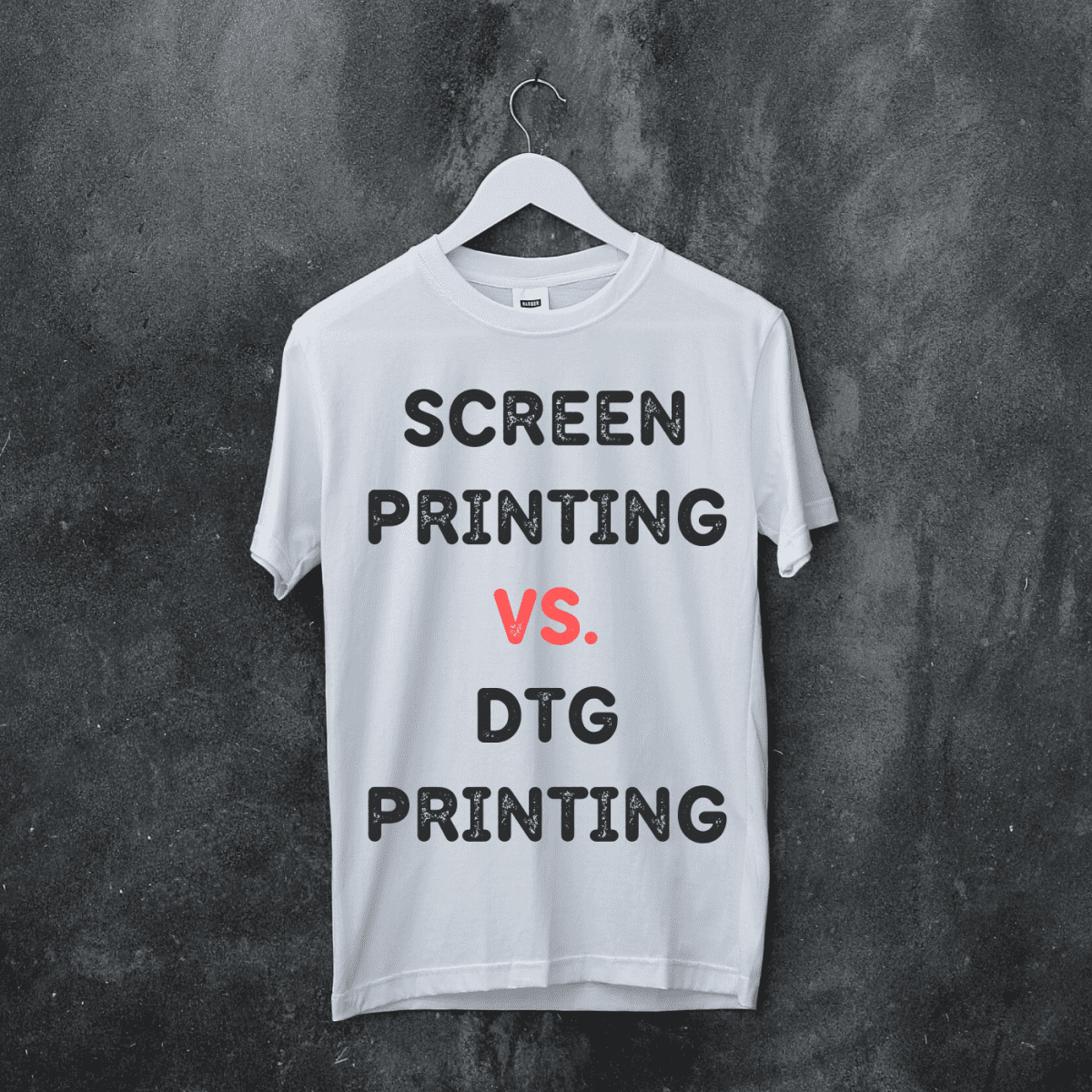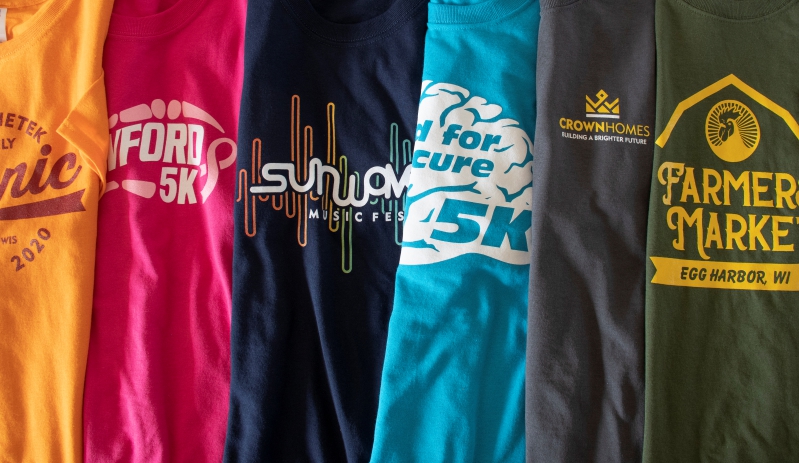Tx Tees Fundamentals Explained
Tx Tees Fundamentals Explained
Blog Article
Tx Tees - Questions
Table of ContentsSome Known Details About Tx Tees A Biased View of Tx Tees6 Simple Techniques For Tx TeesThings about Tx TeesTx Tees Can Be Fun For EveryoneThe Best Strategy To Use For Tx TeesTx Tees Can Be Fun For Anyone
Add up various other prices, like the number of energies it takes to run the store and the expense of ink and emulsion per layout. Take the print below.The solution should only be a couple of cents given that you 'd only need to layer one display for this work. Exactly how much should you charge per tee shirt to make an earnings? Generally, printers try to make up to 45% profit on a print task. Right here's a table to assist you establish that: total cost per item percent of preferred revenue as a decimal (example:.25 or.45) revenue made per product per task Currently allowed's discuss the productivity of DTF.

With DTF, you can print a handful of t shirts, or simply one. Utilize the same calculator as the area over to calculate just how much revenue you 'd use DTF transfers. Contrast the costs and earnings to whichever technique speaks ideal to your configuration and process. Both display printing and DTF have their specific niches in the world.
Not known Details About Tx Tees
The very best method to recognize? Ask around and see what print shops like yours are doing. custom cap printing. Attempt both out and see which you like better
When you're selecting what kind of printing technique to make use of for publishing your art work layouts on your garments, it's essential that you understand the differences between these 2 methods so you can maximize results while reducing costs. Screen printing is the most typically utilized method for printing designs on textiles.
DTG printing is also called spot or direct to garment printing because it prints just what is required rather of making a display as display printers do. https://tuongs-ziancy-praurst.yolasite.com/. Screen printing functions by screen filler squeegee display printing ink screen mesh display, then transferring the photo to garment utilizing heat and/or stress
The DTG printer uses unique dye-sublimation inks that are used into a pre-designed photo by a digital printing system. The inks enter into the textile, enabling vivid colors and phenomenal detail. It's additionally called spot or straight to garment printing since it publishes only what is required as opposed to making a screen as display printers do.
Examine This Report about Tx Tees
It's much faster - you can print a fullcolor picture in minutes, as opposed to hours for screen printing. Second, there's no established up time or costs included - you can print any type of layout you like, without having to develop a display. Third, there's no waste - due to the fact that screen printers display print one design at once, they need to screen each color separately.
The paper is really pricey and can only be used once. Once it's printed on, it has to be thrown out. - The initial purchase cost is less than the upfront investment of DTG printers- You can print multi-color designs one screen at a time as opposed to needing to print each shade individually like DTG printing.

The 10-Minute Rule for Tx Tees
Nonetheless, rather than utilizing display mesh as screen printers do, dye sublimation printers utilize laser modern technology to transfer your pictures onto garments or paper. A warmth procedure transfers the dye from its solid-state directly into the gas stage which subsequently fuses it onto fabric substrates when they are quickly warmed to heats under high pressure.
Sublimation printing is green. It uses less water than screenprinting, and because it doesn't include making use of unsafe solvents, it's safe for all sorts of clothing. The dye sublimation inks are likewise odor-free when healed, unlike display printers that make use of harmful chemicals during the screen printing process that leave behind an unpleasant smell.
They also save cash on expensive devices like direct exposure devices given that color sublimation printers do not call for a UV direct exposure system or a flash remedy oven that is normally utilized in screen printing (t-shirt printing). What is direct to garment printing (DTG Printing)? DTG printing is an electronic screenprinting procedure that publishes directly onto fabric using specialized inkjet printers
The 9-Second Trick For Tx Tees
DTG printing uses numerous advantages over standard screenprinting, including the capacity to print photographic go right here top quality pictures, better color vibrancy, and the ability to publish designs on darker textiles. DTG printers work by warming the textile ink till it becomes a gas. The gas after that permeates the material, bonding with the fibers to create an irreversible print.

Display printers simply prepare their screen after that begin publishing until they run out of item or ink.- There is a variety of seasoned display printers around the world, which can be valuable for novices. - It's a slower process - display printers usually need to wait on the ink to dry prior to they can publish the next color- Display printers need hands-on labor, so there's a higher understanding contour and it takes longer to create a premium design- Display printing isn't as precise as DTG printing, so you may obtain some "blood loss" of colors from one component of the picture onto an additional otherwise done effectively.
All about Tx Tees
Nevertheless, rather of utilizing screen mesh as screen printers do, color sublimation printers utilize laser modern technology to transfer your pictures onto garments or paper. A warmth process transfers the color from its solid-state directly into the gas stage which in turn fuses it onto textile substratums when they are rapidly heated up to heats under high pressure.
Sublimation printing is green. It uses less water than screenprinting, and due to the fact that it does not involve using unsafe solvents, it's safe for all kinds of garments. The color sublimation inks are also odor-free when cured, unlike screen printers that utilize unsafe chemicals during the screen printing process that leave an undesirable smell.
They also save money on expensive devices like direct exposure devices since dye sublimation printers don't need a UV exposure system or a flash treatment stove that is typically used in screen printing. What is direct to garment printing (DTG Printing)? DTG printing is a digital screenprinting process that prints directly onto fabric making use of specialized inkjet printers.
Getting My Tx Tees To Work
DTG printing offers many advantages over standard screenprinting, including the ability to print photo high quality images, greater shade vibrancy, and the capability to print designs on darker textiles. DTG printers function by heating the textile ink till it develops into a gas. The gas after that permeates the fabric, bonding with the fibers to develop a long-term print.
Report this page